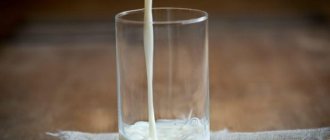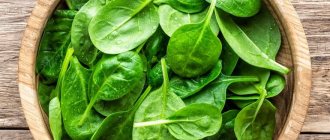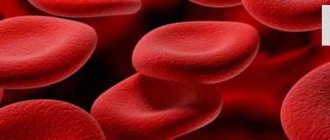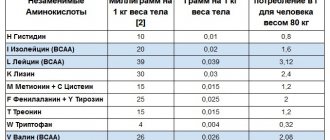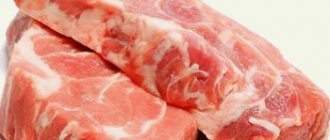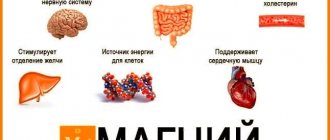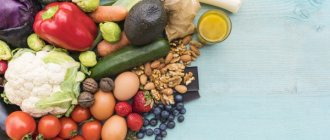5 258
Vitamin B5 is very common in nature - it is everywhere. Most likely, this is due to its enormous importance for the body and nature has done everything to ensure that humans and animals consume this vitamin in almost any diet. It is vital for the proper functioning of the brain and nervous system, and a better vitamin for the skin simply cannot be found. Important microelements can be supplied to the body through food or from vitamin complexes. Of course the first option is preferable. Since today we are talking about pantothenic acid, where is vitamin B5 (pantothenic acid) found in foods ?
So, what does pantothenic acid contain? In what products? What are the concentrations of pantothenate (Vitamin B5) in food (table)? All this can be found out below in the article.
Natural replenishment
Vitamin B5 performs many beneficial functions:
- is an integral part of coenzyme A, which is responsible for metabolism;
- helps produce antibodies;
- stimulates the activity of the adrenal glands and their production of hormones;
- participant in the formation of neurotransmitters, substances that conduct electrochemical impulses from neuron to cell;
- restores the condition of the skin and mucous membranes;
- reduces the production of hydrochloric acid in the stomach;
- regulates intestinal motility.
The daily requirement for pantothenic acid varies in different countries, on average from 4 to 12 mg. For Russia, the norm is set at 5 mg. For children, 1 to 5 mg is recommended, depending on the age group. B5 is independently synthesized in the intestines and comes with food. To get enough vitamins B5 and pantothenic acid, you need to know what types of food contain large amounts of it.
Now Foods, Pantothenic Acid, 500 mg, 250 Capsules
RUB 1,181
More details
What is pantothenic acid?
Pantothenic acid is vitamin B5, a nutrient obtained from food and produced in small doses in the intestines. Its role in the life of the body is enormous, since the vitamin is involved in the metabolism of proteins, fats and carbohydrates - compounds through which all processes in the body take place. Pantothenic acid is also involved in the synthesis of lipids, cholesterol, histamine, hemoglobin and many other vital elements. Once in the body, vitamin B6 is converted into its active form - pantethine, but pantethine and pantothenic acid are different substances.
TOP 10 food sources
Getting the required daily intake is quite simple - you need to include food sources containing the necessary substance in your diet. The prevalence of pantothenic acid is high, it is found in meat, vegetables, fruits, spices, and fish.
The top ten food sources containing the most vitamin B5 are presented in the table:
| Name | Quantity per 100 g, mg |
| Brewer's yeast | 12,05 |
| sunflower seed | 7,6 |
| Beef liver | 7,17 |
| Chicken liver | 6,67 |
| Chicken egg, yolk | 4 |
| Egg powder | 4 |
| Low-fat milk powder | 3,32 |
| 25% milk powder | 2,7 |
| Paprika, capsicum | 2,5 |
| Split peas | 2,3 |
The largest amount of vitamin is contained in brewer's yeast, 12.05 mg, which is more than 200% of the daily requirement. But they cannot be considered as an independent source of nutrition, so you can compensate for the deficiency with the help of beef liver, which contains 7.6 mg, which completely covers the body’s needs. If you know of other members of the food basket that contain more B5, please share your information.
Harm, side effects and contraindications
There are no restrictions on the maximum permissible daily intake of vitamin B5: exceeding the daily intake does not cause side effects. Excess pantothenic acid is excreted from the body through urine, as it is a water-soluble vitamin. Pantothenic acid is found in many foods and is produced in the body itself, so allergic reactions to it do not occur. It is well tolerated by the body at any age, but in some people large doses still cause digestive disorders. In this case, the drug should be stopped.
You should consult your doctor before taking pantothenic acid if you are pregnant, breastfeeding, taking medications, or have digestive problems. There are no direct contraindications for taking the vitamin during these periods, since the harm of pantothenic acid has never been documented, but extra precaution certainly won’t hurt. There are only two contraindications to the use of the vitamin: with hypervitaminosis, which is rare and asymptomatic, and with hemophilia (excess vitamin can increase blood clotting time). In other cases, the benefits of pantothenic acid along with its complete harmlessness make it an excellent dietary supplement for any person.
Dairy
Milk and its derivatives are consumed by adults and children. They are available in all stores and have excellent taste. The table shows which dairy products contain vitamin B5.
| Name | Quantity per hundred g, mg |
| Low-fat milk powder | 3,32 |
| 25% milk powder | 2,7 |
| Roquefort cheese | 1,16 |
| Condensed milk | 0,8 |
| Processed cheese | 0,6 |
| Parmesan cheese | 0,45 |
| 16.5% curd mass | 0,4 |
| Curdled milk | 0,38 |
| Milk 3.2% | 0,38 |
The percentage of B5 is not too high. You will need 200 grams of milk powder to get the necessary replenishment.
Vitamin B5 in cosmetics
If you look around your home, you'll likely come across vitamin B5 in several cosmetic products and more. Panthenol is found in foods, supplements and hygiene products. It has a chemical structure similar to alcohols and is used to moisturize and smooth the skin and hair from the inside (if these are oral products) and externally (if these are topical products). But is it safe for you and your family to use panthenol in personal care products? Let's discuss why panthenol is found in many cosmetics and look at the facts to understand how it affects your body.
Egg products
Eggs are one of the favorite human foods. The main criterion is freshness. They are consumed raw, boiled, fried. Below you will see which egg products contain vitamin B5.
| Name | Quantity in one hundred grams, mg |
| Egg yolk | 4 |
| Egg powder | 4 |
| Duck egg | 1,86 |
| Goose egg | 1,76 |
| Chicken egg | 1,3 |
| Omelette | 1,29 |
| Egg white | 0,24 |
| Quail egg | 0,12 |
Egg yolk and powder share first place in substance content - 4 mg each. This represents 80% of the daily requirement.
Solgar, Pantothenic Acid, 550 mg, 100 Veggie Caps
RUB 1,169
More details
Meat products
Meat as a food product remains held in high esteem by the world's population. Vegetarians refuse to eat meat, which is why they lose many essential substances - amino acids and vitamins. Which meat products contain vitamin B5 are presented in the table.
| Name | Quantity in one hundred grams, mg |
| Beef liver | 7,17 |
| Chicken liver | 6,67 |
| Goose meat | 1,83 |
| Duck | 1,6 |
| Beef kidneys | 1,56 |
| Fried chicken | 0,97 |
| Chicken breast | 0,92 |
| Rack of pork ribs | 0,75 |
| Beef tongue | 0,75 |
| Turkey meat | 0,63 |
Despite the fact that liver contains 7.17 mg of B5, many cannot consume it due to the specific taste, chicken liver is perceived as calmer, and the pantothenic acid content is sufficient to meet the needs.
Symptoms of hypovitaminosis
Pantothenic acid deficiency is not common, since it is found in many foods, and the daily requirement of vitamin B5 is small: 10–15 mg in adults and 1–5 mg in children. A deficiency of pantothenic acid occurs during stress, during active physical activity, during periods of pregnancy and breastfeeding (at this time the level of pantothenic acid increases several times), as well as during strict diets, extremely poor nutrition, or diseases of the digestive system that reduce the absorption of nutrients. Symptoms of vitamin B5 deficiency are similar to typical symptoms of general hypovitaminosis:
- insomnia, fatigue and decreased performance;
- headaches and dizziness;
- emotional instability and loss of mood;
- muscle pain, burning pain in the legs;
- loss of appetite and nausea;
- digestive system disorders.
Seafood
Seafood is not as accessible as meat. But in Russia there are many areas where commercial fish are found. Below is a list of which fish products contain vitamin B5.
| Name | Amount in one hundred grams, mg |
| Rainbow trout | 1,99 |
| Salmon | 1,6 |
| Red salmon | 1,37 |
| Chum salmon | 1,0 |
| Caviar | 1,0 |
| Mussels | 0,95 |
| Octopus | 0,9 |
| Carp | 0,87 |
| Pink salmon | 0,75 |
The amount of vitamin was calculated in boiled and baked sources, with the exception of caviar, which is preserved in salted form. The richest representative of the fish kingdom in pantothenic acid is trout, it contains 39.8% of human needs.
Products with vitamin B5 - recipes
Regularly consuming foods containing vitamin B5 is a great way to get all the benefits of vitamin B5/pantothenic acid.
Here are some delicious recipes rich in vitamin B5:
- Recipe for baked salmon with pesto sauce and pecans
- Wakame pate recipe (sunflower seeds, not liver meat)
- Cauliflower Salad Recipe
It's not hard to find more culinary creations that are rich in B5. Simply select vitamin B5 foods from the list above and find recipes that include them.
Cereals and legumes
Grains and legumes are eaten by everyone. The diet of vegetarians and those following varied diets includes this plant group. Which of these products contain vitamin B5 is presented in the table.
| Name | Quantity per hundred g, mg |
| Peas | 2,3 |
| Wheat bran | 2,18 |
| Lentils | 2,14 |
| Soybeans | 1,75 |
| Oat bran | 1,5 |
| Brown rice | 1,49 |
| Rye | 1,46 |
| Beans | 1,2 |
| Wheat | 1,2 |
The leader in this group is peas, which contain 46% of the daily requirement.
Hair and nail products
Hair care products include panthenol because of its ability to improve the appearance of your hair, adding shine, softness and strength. It can also protect your hair from harsh styling methods or environmental damage by locking in moisture. Studies have shown that panthenol can inhibit hair damage and thinning.
Your nails are made of keratin proteins, just like your hair. It follows that panthenol can strengthen your fingernails and toenails. You can find B5 in nail strengtheners, hand creams and cuticle oils. Studies have shown that applying panthenol to the nails helps moisturize the plate and prevents it from splitting and breaking.
Fruits and vegetables
Fruits and vegetables are constant sources of a variety of vitamins. Not all of them can be purchased all year round; in canned form, the content of nutrients decreases. The leading positions in concentration are held by the following:
| Name | Amount per hundred grams, mg |
| Paprika, capsicum | 2,5 |
| Avocado | 1,4 |
| Cauliflower | 0,9 |
| Broccoli | 0,5 |
| Figs | 0,43 |
| Prunes | 0,42 |
| Pomegranate | 0,38 |
| Banana | 0,33 |
Paprika is at the top of the list with 50% of the daily value. But this type belongs to spices; it is impossible to consume 200 grams per day.
Implications for athletes
People who regularly train in the gym are characterized by accelerated removal of nutrients from the body, so they, like no one else, need additional sources of vitamins and minerals.
Vitamin B5 is involved in energy metabolism, so its use allows you to increase your endurance and give yourself more serious stress. It helps reduce the production of lactic acid in muscle fibers, which gives sore muscles after training, known to all sports fans.
Pantothenic acid activates protein synthesis, which helps build muscle mass, strengthen muscles and make them more prominent. Thanks to its action, the transmission of nerve impulses is accelerated, which allows you to increase the reaction speed, which is important in many sports, and also reduce the degree of nervous tension during competitions.
Seeds and herbs
Seeds of various plants are readily eaten. The seeds contain a large amount of nutrients beneficial to humans, but are very high in calories. Pantothenic acid is also present in the composition. Fresh greens successfully complement the diet and provide fresh vitamins. The disadvantage is the seasonality of the products.
| Name | Quantity per hundred g, mg |
| Sunflower seeds | 7,6 |
| Peanut | 1,77 |
| Hazelnut | 1,15 |
| Dried parsley | 1,06 |
| Dried oregano | 0,92 |
| Cilantro | 0,57 |
| Spinach | 0,3 |
Different sources indicate different levels of pantothenic acid, the amount depends on the degree of processing of the product. Leader - sunflower seeds, 7.6 mg. But the calorie content is 578 kcal.
Action
The main property of vitamin B5 is its participation in almost all metabolic processes necessary for the normal functioning of the body. Thanks to it, glucocorticoids are synthesized in the adrenal cortex, which improve the functioning of the cardiovascular system, strengthen the musculoskeletal system and nervous system, promoting the synthesis of neurotransmitters.
© iv_design — stock.adobe.com
Pantothenic acid prevents the formation of fat deposits, as it is actively involved in the breakdown of fatty acids and converting them into energy. It also takes part in the production of antibodies, which help the body's immune system fight infections and bacteria.
Vitamin B5 slows down the manifestation of age-related changes in the skin, reducing the number of wrinkles, and also improves the quality of hair, accelerates its growth and improves the structure of nails.
Additional beneficial properties of acid:
- normalization of pressure;
- improvement of intestinal function;
- control of blood sugar levels;
- strengthening neurons;
- synthesis of sex hormones;
- participation in the production of endorphin.
